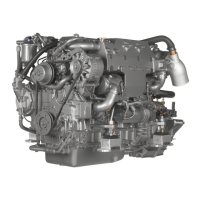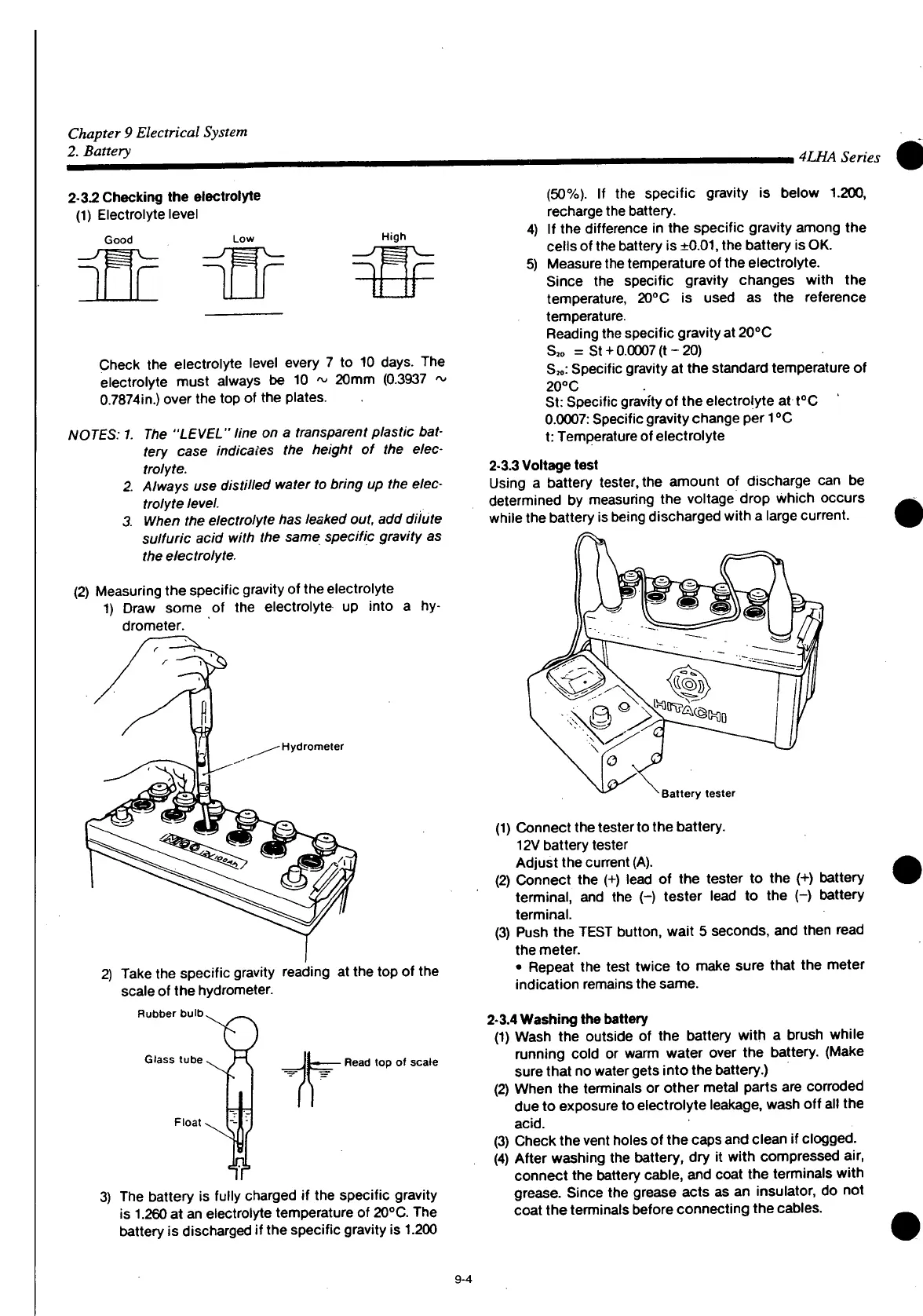Chapter 9 Electrical System
2. Battery
,
4LHA Series
2-3.2
Checking
the electrolyte
(1) Electrolyte level
Good
Low
High
Check
the electrolyte level every 7 to 10 days. The
electrolyte must always be 10 ~ 20mm (0.3937 ~
0.7874in.) over the top of the plates.
NOTES:
1.
The "LEVEL" line on a transparent plastic bat-
tery case indicates the height of the elec-
trolyte.
2. Always use distilled water to bring up the elec-
trolyte level.
3. When the electrolyte has leaked out, add dilute
sulfuric acid with the same specific gravity as
the electrolyte.
(2) Measuring the specific gravity of the electrolyte
1) Draw some of the electrolyte up
into
a hy-
drometer.
Hydrometer
2) Take the specific gravity reading at the top of the
scale
of the hydrometer.
Rubber
bulb..
Glass
tube
Float
-
Read
top of scale
3) The battery is fully charged if the specific gravity
is
1.260 at an electrolyte temperature of
20
o
C.
The
battery is discharged if the specific gravity is 1.200
(50%). If the specific gravity is below 1.200,
recharge
the battery.
4) If the difference in the specific gravity among the
cells
of the battery is
±0.01,
the battery is OK.
5)
Measure
the temperature of the electrolyte.
Since
the specific gravity changes
with
the
temperature,
20
o
C
is used as the reference
temperature.
Reading
the specific gravity at
20
0
C
S,» = St + 0.0007
(t-20)
S»:
Specific gravity at the standard temperature of
20
o
C
St:
Specific
gravity of the electrolyte at t
0
C
0.0007:
Specific
gravity change per 1
0
C
t: Temperature of electrolyte
2-3.3
Voltage
test
Using
a battery tester, the amount of discharge can be
determined by measuring the voltage drop which occurs
while the battery is being discharged
with
a large current.
Battery tester
(1) Connect the tester to the battery.
12V
battery tester
Adjust the current (A).
(2) Connect the (+) lead of the tester to the (+) battery
terminal, and the (-) tester lead to the (-) battery
terminal.
(3)
Push
the
TEST
button, wait 5
seconds,
and then read
the meter.
• Repeat the test twice to make sure
that
the meter
indication remains the same.
2-3.4
Washing
the
battery
(1) Wash the outside of the battery
with
a brush while
running cold or warm water over the battery. (Make
sure
that
no water gets
into
the battery.)
(2) When the terminals or other metal parts are corroded
due to exposure to electrolyte
leakage,
wash off all the
acid.
(3) Check the vent holes of the caps and clean if clogged.
(4) After washing the battery, dry it
with
compressed air,
connect
the battery cable, and coat the terminals
with
grease.
Since the grease acts as an insulator, do not
coat the terminals before connecting the
cables.
9-4

